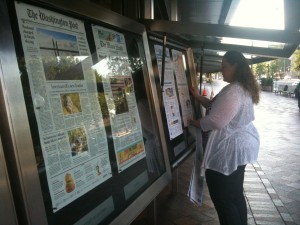
Dr. Michelle Ferrier is an associate professor in the School of Communications at Elon University in North Carolina. She is also vice president of Journalism That Matters.
At the end of this discourse, someone will accuse me of fouling my own nest. That’s if you ever even see this commentary, printed or online in what used to be called the local newspaper.
Regardless, it will circulate. As do the words of the late Edward R. Murrow, the legendary CBS journalist, more than 50 years later that start this letter. Because if the structures of networks and media ownership and cultural representation remain the same — if they continue unaltered – then the main of us may look up one day dazed at what has transpired and realize we have done it to ourselves.
The North Carolina General Assembly this spring is considering the rollback of a longtime requirement for some local governments that legal notices be printed in newspapers, a revenue stream for publishers totaling millions of dollars a year. States across the country, including neighboring Virginia, have been gnawing on the issue as well.
Should HB 504 become law, nine North Carolina counties and municipalities would no longer be dependent on their local publications as a vehicle for bidding out state contracts, announcing property foreclosures, or conducting in public any of several other government or legal business. The counties represented in this bill could instead post notices on their own electronic servers.
But what would be lost in the transaction? The legacy local newspaper, most likely, already facing technological disruption, the “great collapse” of revenue from classified, display and subscriptions, a product struggling to reinvent itself in our brave, new digital world.
For more on this post, visit: http://wp.me/pgDpt-7C


